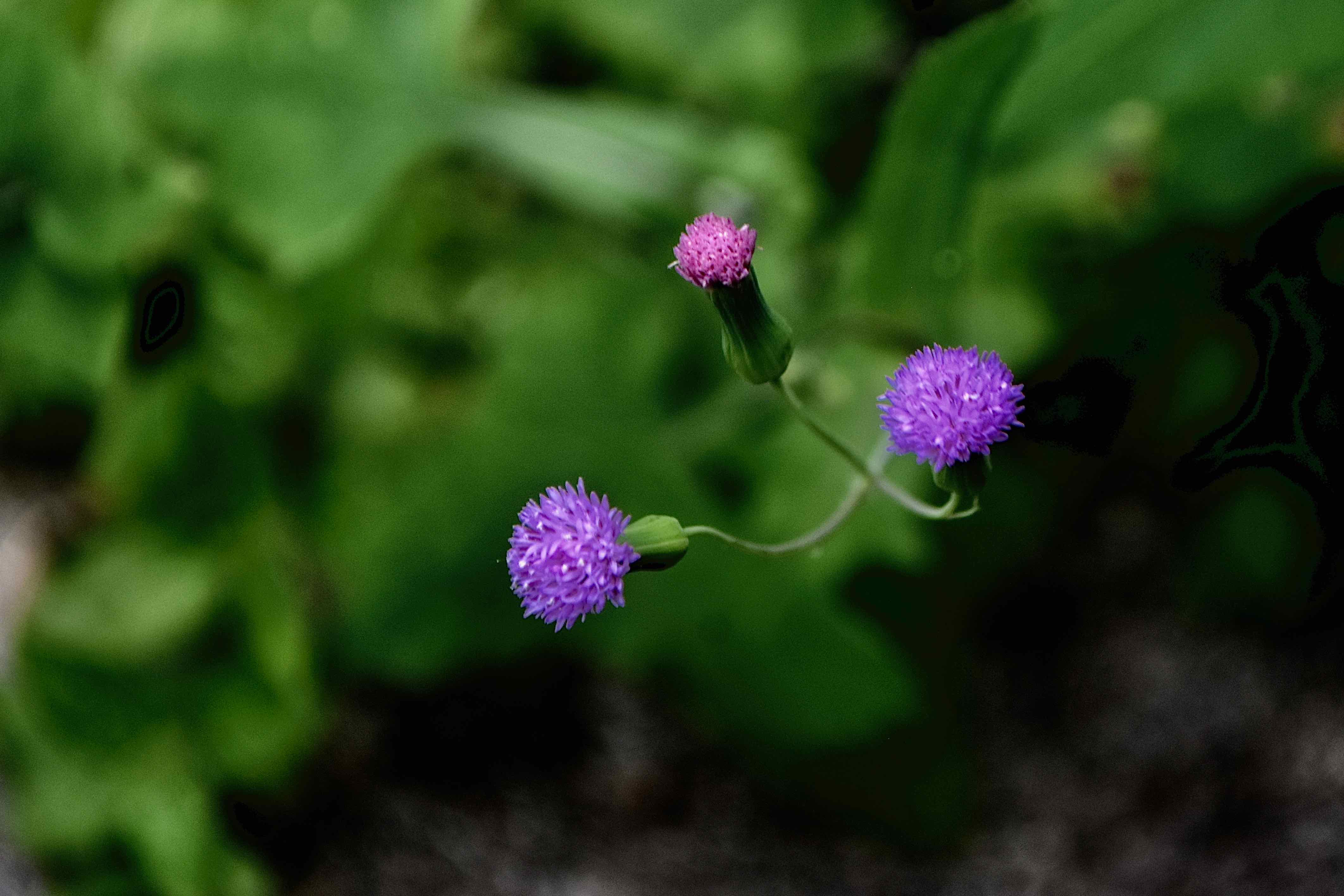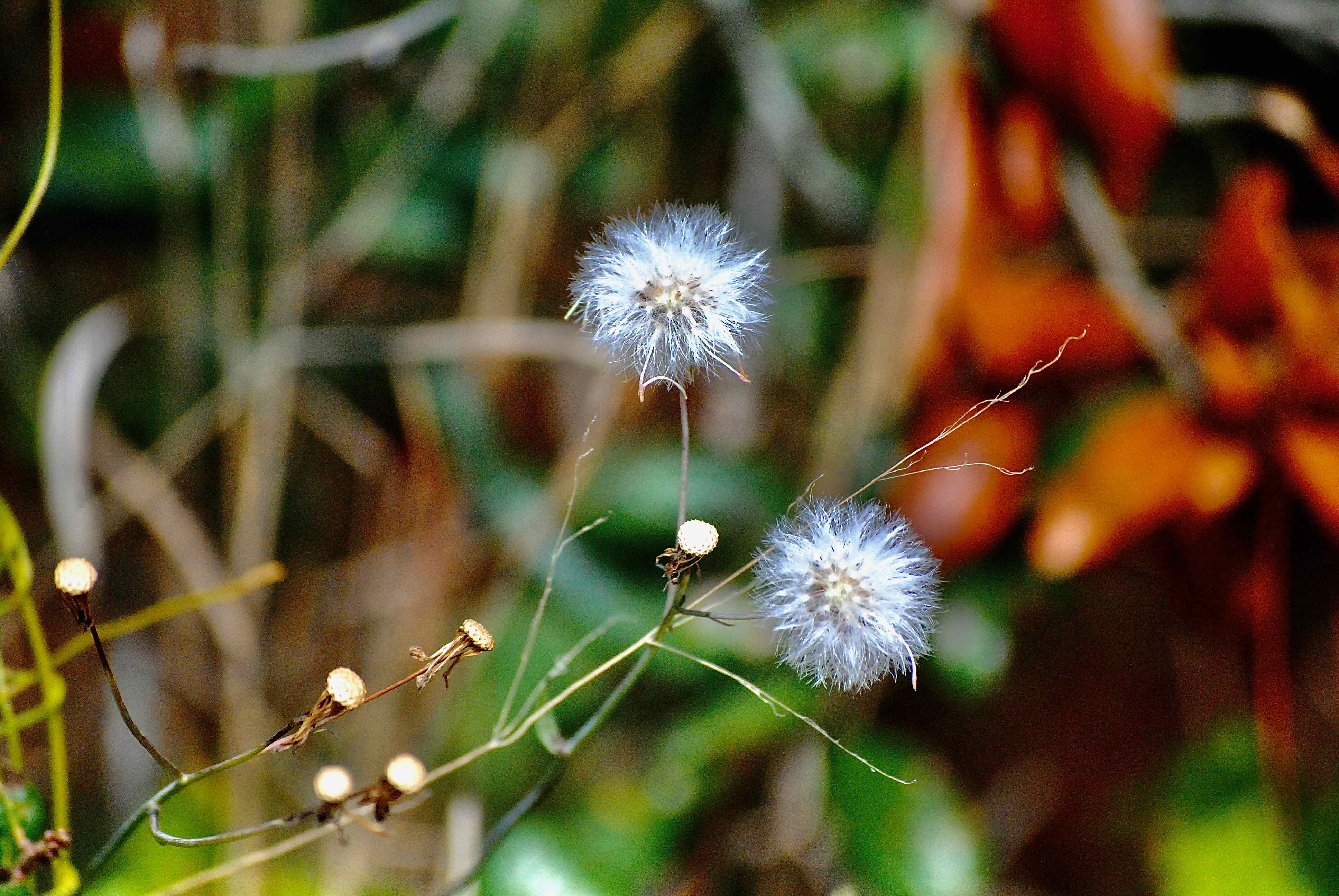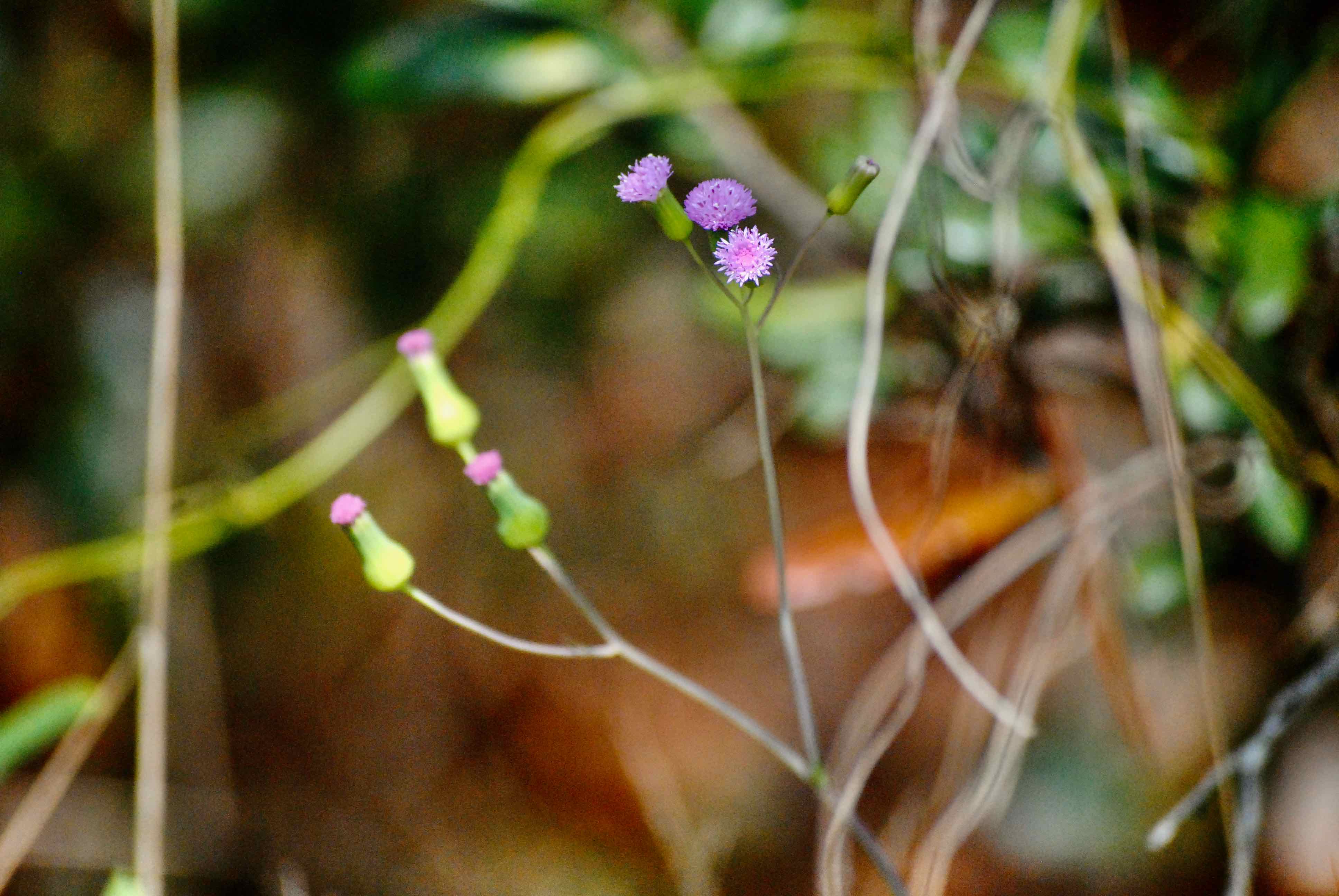
Lilac tasselflower, photographed at Blazingstar Preserve, Boca Raton, Palm Beach County, in April 2021.
In much of the world, lilac tasselflower, Emilia sonchifolia, is a pretty important plant, surprisingly enough. It's used to treat all kinds of medical conditions and it's a source of food to boot.
Here in Florida, though, it's just another weed.
It's common enough, found in grasslands, roadsides, perhaps your lawn or garden throughout Central and South Florida. It can be rather tall, approaching 30 inches, but usually much shorter and always gangly looking.
The flowers are generally lilac in color but can be more deeply shaded, white or yellowish. The flower heads are urn-shaped and atop a long stem. Leaves vary in shape from triangular to oval and usually deeply toothed along the edges. It has a cousin, red Florida tasselflower, that looks similar but has bright red flowers.
We've read that in Nepal, lilac tasselflower is used to make beer and liquor. The plant is dried, powdered and mixed with flour to make a cake that is then fermented with yeast and distilled. But we couldn't find a primary source that backs that up. We did find that the plant is used as a vegetable — the leaves are used in salads while the whole plant is cooked and used as greens. That's fairly common in different parts of Asia.
Medicinal use of lilac tasselflower does vary a bit. In parts of Nepal, the flowerheads are chewed and kept in the mouth to prevent tooth decay.
In China, a tea made from the leaves is used to treat dysentery. The juice of the leaves is used to treat conjunctivitis. Lilac tasselflower also is used to stop bleeding, to break fevers, as a general anti-inflammatory agent and as a pain reliever. And more.
There's been some scientific research into how effective the plant might be in treating these conditions, almost all of which has been conducted at Asian and African universities. These studies have found that lilac tasselflower, which is full of terpines, tannins, flavonoids and alkaloids, does have some potential benefits at least under laboratory conditions. One study found that it enhanced white blood cell counts, useful in fighting infections, while another found it had promise as an anti-inflammatory agent and pain reliever. We're guessing that the lack of attention by western researchers is because the plant is little used here. That might be changing; we found one article on how to grow the plant in California, inspired by its medicinal uses elsewhere.
Lilac tasselflower is said to be a native of Central America and South America, but is found in warmer places around the world. It's pretty much well-behaved and not considered a problem most everywhere it's found except agriculturally in a few isolated spots and a few specific crops. It does harbor some diseases. Whether lilac tasselflower is a Florida native is a matter of debate, apparently. The U.S. Department of Agriculture says yes; the Institute for Regional Conservation, the Florida Atlas of Vascular Plants and Flora of North America all say no. A native, by the way, is defined as having been here when the first European explorers hit Florida's shores.
Lilac tasselflower is also known as Flora's paintbrush, Cupid's shaving brush, Emilia herb and purple sow. It is a member of Asteraceae, the sunflower family.
Click on photo for larger image
U.S. Department of Agriculture Distribution Maps
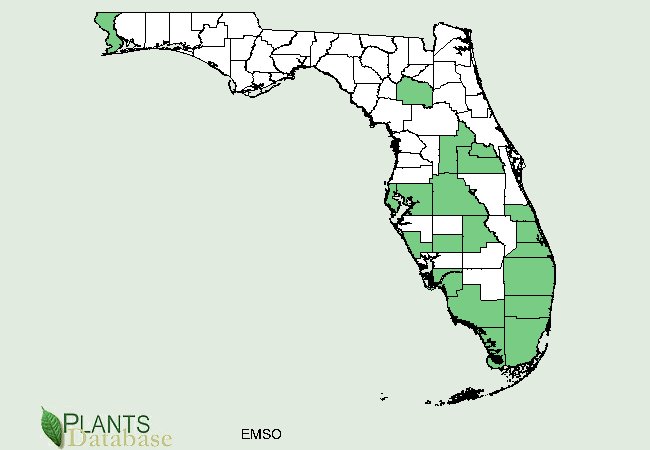

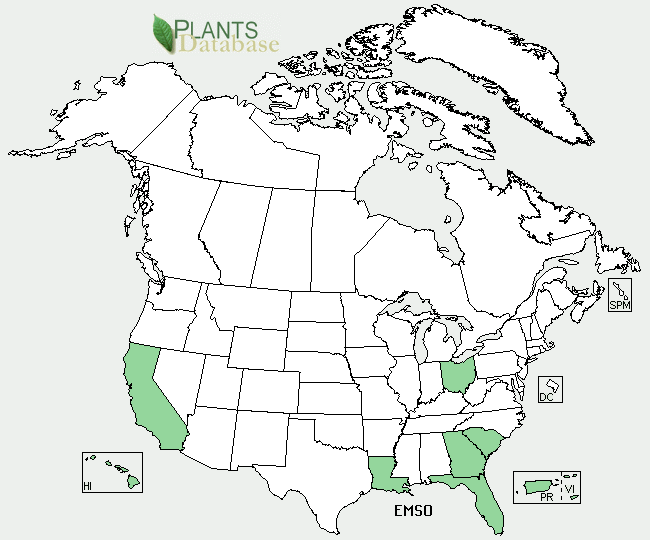
Links for Lilac Tasselflower

